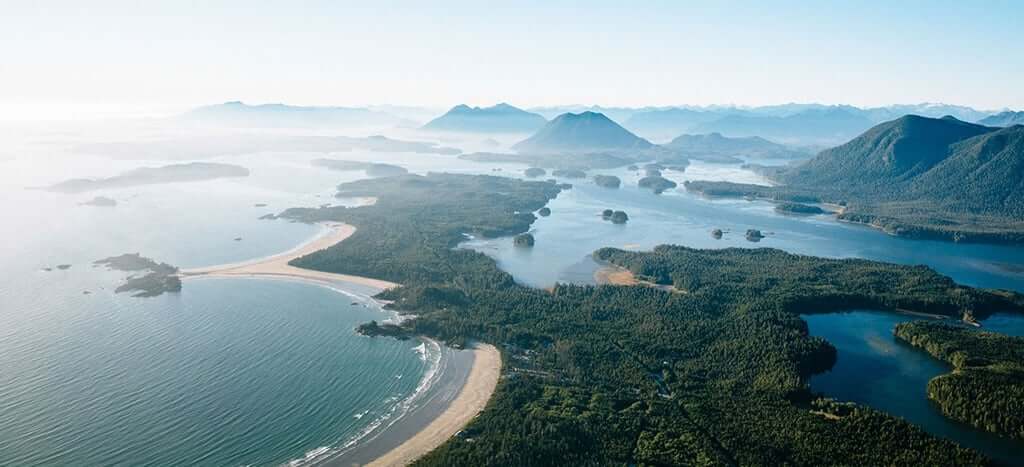Experiences That Travel Well: Digital Journeys For Globetrotters – gb

The travel and hospitality industry has been shifting into the digital sphere for years, and today, many physical trips start off as digital journeys. Social media has popularized destinations, price comparison sites have democratized access to travel, and the proliferation of online booking platforms has widened access to the world’s top vacation spots.
In fact, the modern traveler navigates more digital touchpoints than ever before, from dreaming of escape while browsing a friend’s holiday snaps to tapping into a digital hotel concierge service – and everything in between.
In this post, we asked two seasoned travelers and digital travel experts to share some thoughts on the digital transformation of the travel sector.
First class UX – rewarding digital journeys
With its distinct, highly visual editorial content and stunningly-curated photography, Tiny Atlas Quarterly is a destination unto itself. Emily Nathan is the creative mind behind this unique platform, which connects travelers and wandering sightseers through advice and visual records of some of the planet’s most beautiful destinations.
So, what does the editor-in-chief of one of the prettiest travel blogs out there look for in a digital travel experience? “Simplicity and white space, great use of color, great photography and type,” says Emily.
But it’s not all about the look and feel of a website. She cites “speed and accuracy of the information delivered” as must-haves when exploring travel options.
MOST HOTEL OR PUBLIC WIFI TENDS TO BE SLOWER, SO SITES THAT TAKE TOO LONG TO LOAD OR LAG WHEN I HIT ‘BUY’ ARE THE ONES I AVOID
Kristin Amico, a travel and food writer who blogs about her globetrotting and keeps a stunning travel diary on Instagram, also values speed when planning travel on the go. “Most hotel or public wifi tends to be slower, so sites that take too long to load or lag when I hit ‘buy’ are ones I avoid,” says Kristin.

Piha, NewZealand – by @shadowontherun

Puglia, Italy – by @millycookbook
Mobile also means “in movement”
Designing travel sites around the needs of travelers might seem like an obvious choice, but the truth is, many platforms still haven’t adapted their offer to ‘mobile’ users – i.e. to a community that is often planning its next move while on the go.
“My phone is the go-to for the most part,” says Emily, “but I try to book airline travel from a desktop.” Despite many sites adapting their interfaces for a smaller screen, the experience of comparing flights still leaves many people – Emily included – reaching for the desktop.
Kristin is also a mobile-first traveler. She relies on her phone or tablet when traveling overseas, and affectionately refers to her smartphone as her ‘assistant.’ She stays away from ‘clunky’ sites that are not mobile-friendly. “Booking sites that aren’t as robust on mobile as they are on desktop make the process that much harder,” she says.
While some travel platforms may have a bit of catching up to do in order to meet the needs of today’s travelers, others have embraced new technologies, and digital innovation has certainly impacted the sector as a whole.
Kristin singled out mapping programs like Google Maps and Maps.me as two technologies she can’t live without when on the road. “I can be more flexible when I’m out and about and simply pull up the map, search for nearby attractions, restaurants, etc,” she explains.
Social destinations
Social platforms have also had a tremendous influence on the way people travel – particularly Instagram. “Travelers find and earmark destinations on their phones predominantly through Instagram,” says Emily. “You can see incredible imagery as well as geotags for the exact location in the world.”
But while many journeys start on social media, it can sometimes feel like some trips are embarked upon just to end up documented on Instagram, and the technology that is facilitating so much wanderlust is also guilty of creating a disconnect between traveler and destination.
“Many people are traveling simply to capture a certain photo instead of really seeing the place, and that is always unfortunate,” says Emily. Increased accessibility also ushers in the need for sustainable modes of tourism, she notes, pointing out that increased visibility and traffic can also make local wildlife and populations more vulnerable.

Niagara Falls – by @kristinamico

Udaipur, Rajasthan – by @kristinamico
Better, cheaper, sooner
Kristin says that the digital shift has not so much changed travelers’ priorities as provided them with better tools to meet their travel goals. Booking sites, for example, can now compare thousands of offers to connect the price-conscious traveler with a suitable option. Finding “discounted hotels in the off-season or luxury accommodation without the high price tag,” she says, is just one of the advantages of the price-comparing technology that is out there.
Emily is also a fan of good hotel deals, and singles out Hoteltonight as one of her go-to booking apps.
Whether they are looking for last-minute offers or personalized travel recommendations, one thing today’s consumers have in common is a low threshold for time-wasting.
Planning a trip has always been part of the trip. But the excitement of booking a flight through a travel agent months in advance has been replaced by the satisfaction of being able to confirm a vacation in just a few clicks or taps. Today’s travelers have little patience for any experience that isn’t seamless, and prefer to save the excitement for the actual trip.
Their digital journey does not end once they board a plane or hop on a train, but continues to unfold parallel to their physical journey, as they book hotels and transport on the go, and update the world on their whereabouts.
In order to optimize experiences for travelers, brands must take into account the unique needs and contexts of modern-day explorers. Digitally listening to this distinct community is the first step to understanding what keeps them journeying through your platform, and what makes them hop on the first train out.
Photo of Tofino, Vancouver Island, British Columbia: https://www.wyapoint.com – Tiny Atlas Quarterly



